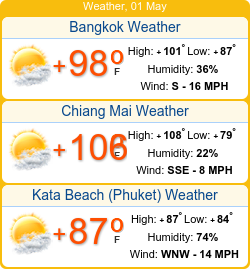
What's Happening at Wat Tampa
Search
Wat Tampa Visitors
Home
Article Index
The Thai nation settled firmly in present-day Thailand more than 700 years ago, and also it adopted the present form of Buddhism since then. Buddhism has been the state religion of Thailand. Under the constitution, the King as a symbol of the nation, although a protector of all religions, must be a Buddhist. Around 95 percent of the Thai population is Buddhist. Buddhism has a deep influence in all kinds of Thai culture such as Thai arts, tradition, architecture, sculpture, painting, drama, learning, and the character of the people.In has modeled their manner of thinking and acting. In short, it has become an integral part of Thai life.{tooltip}3{end-link}Ibid. p. 11.{end-tooltip}
Around B.E. 1800/{tooltip}1257 C.E{end-link}1257 A.D.{end-tooltip}, King Ramkhamheang the Great of Sukhothai brought Buddhist monks from Nakhom Si Thammarat in the south to propagate Ceylonese Buddhist in Sukhothai, the capital of Thailand in the north. Since then the Ceylonese Buddhism spread all over the country. Every Thai king is a devout Buddhist and great patron of Buddhism. In the reign of King Taksin the Great of Thonburi, after his liberation of the country from the yoke of Burma in B.E. 2310/{tooltip}1767 C.E.{end-link}1767 A.D.{end-tooltip}, he gave the country for Buddha-Puja or Buddhist adoration. And King Phraphutthayotfa or King Rama 1 of {tooltip}Cakri{end-link}Most texts spell the dynasty name as Chakri{end-tooltip} Dynasty of Krung Thep (Bangkok) had also an intention to be a Great Patron of Buddhism.
King Ramkhamheang of Sukhothai withhis court and all of his magnates, practiced the religion of Buddha with devotion. King Mahadharmaraja Lithai, Ramkhamheang's grandson, who reigned in Sukhothai during B.E. 1860-1890/1317-1347 C.E., was a devout Buddhist scholar and he composed a large treatise on Buddhist cosmology called "Traibhumikatha" or Traiphum Phra Ruang" this was the first literature book written in the Thai language{tooltip}4{end-link}Hall, D.G.E. A History of South-East Asia, New York: St. Martin's Press Inc., 1955, p. 150.{end-tooltip}
During Sukhothai and Ayutthaya periods, there were a number of Thai monks who travelled to Ceylon to study Pali Buddhism. Those who were ordained and graduated in Ceylon were revered and honoured by the kings, as well as the Thai people, as great scholars or learned monks. Many of them were well versed in the Palilanguage and wrote a great deal of books on Buddhism as well as the history of Buddhism and Thai history. Many of the books were written in a native script both in the Pali language as well as in the native one of their time.
